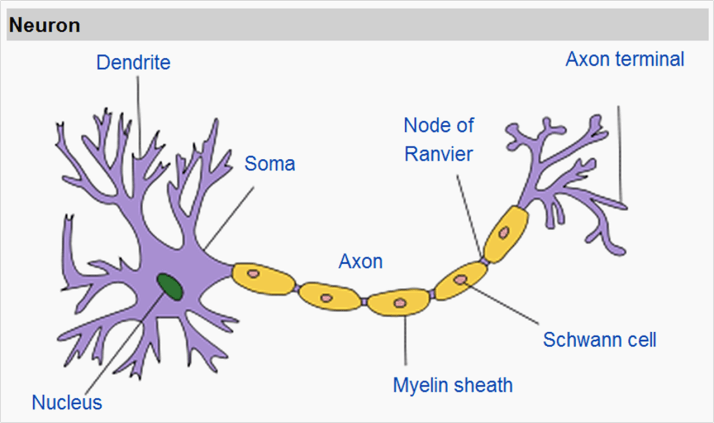New research shows that Lou Gehrig's disease is caused, in part, by a lack of energy for nerve cells and raises the possibility of an entirely new type of treatment

Lou Gehrig's disease (ALS) is a neurodegenerative disease that affects the motor neurons in the brain and spine, which are responsible for muscle movement. The disease spreads gradually until it causes paralysis of the respiratory muscles and death. The cause of motor cell death is unknown and there is no drug treatment for this serious disease. However, in July 2012, a fascinating article was published that raises a glimmer of hope for understanding the mechanism that causes the death of nerve cells and perhaps even instructs on methods of treatment and prevention.
Most neurons are made up of a cell body and a long extension called an axon. An electric current of ions flows along the axon, and when this current reaches the end of the axon, it causes the release of chemicals that activate a nearby cell - the target cell. The target cells of motor neurons, for example, are muscle cells. The axon along which the electric current flows can be extremely long. For example, the cell bodies of motor neurons are found in the spinal cord, and the axon can stretch up to the little toe (in a basketball player, for example, the length of such an axon can reach more than a meter). The axon is therefore similar to an electric cable, and just like an electric cable it needs an insulating film to prevent a short. How is this insulation film made?
Apart from the nerve cells, the brain consists of a huge group of cells called glial cells. One type, called oligodendro-glia, has long extensions that wrap around the axons of the nerve cells and form a fatty sheath called myelin that serves as a sort of insulating film for the axons. The distinct role attributed to myelin is electrical insulation of the axon from the aqueous environment, which prevents leakage of current-conducting ions passing through the axon and accelerates the electrical response compared to axons without myelin. So far, the disease that has been associated in the mind as a disease caused by damage to myelin is multiple sclerosis. In this disease, the immune system attacks the myelin sheath, the electrical currents are damaged, and as a result the nerve commands do not reach the muscles and paralysis occurs.
But in an article recently published in the scientific journal Nature, researchers from Johns Hopkins University in Baltimore, Maryland, discovered a new and surprising role for the myelin sheath, which is supplying energy to the nerve cells, in the form of molecules of a substance called lactate. The supply of lactate keeps the cells alive, and the researchers even showed that when this mechanism is damaged, the nerve cells die. As a rule, the energy needed for cell activity is produced in the cell body and from there it goes to the branches. But when the extensions are long (for example, in those motor nerve cells that send axons to the foot), the cell body fails to provide energy to the entire extension, so additional mechanisms are needed. When these mechanisms are damaged the long axons are damaged first.
Until now, it was known that another type of glial cells, called astrocytes, are responsible for supplying energy to the long branches of nerve cells. However, the team of researchers from Johns Hopkins discovered that it is the oligodendroglial cells that provide energy. And not only that, but in ALS the ability to transfer energy of these cells is impaired. The researchers also showed that mice with this particular oligodendro-dahlia cell defect did have abnormal axon development and nerve cell death similar to the changes seen in the axons of ALS patients. But the most clinically important finding is that adding the energy from an external source prevented cell death. These findings suggest that lactate has medicinal potential. Anaerobic exercise, that is, vigorous exercise for short periods of time causes a lack of oxygen in the cells and therefore the creation of lactate. It is therefore possible that such exercise has a positive effect on the nervous system and prevents cell death.
_________________________________________________________________________________________________________________________________________________________________
And more on the subject
Oligodendroglia metabolically support axons and contribute to neurodegeneration. Lee Y. et al in Nature, Vol. 487, pages 443-448, July 2012.
About the author
The late Yitzhak Ferns was a professor in the neurobiology department of the Hebrew University in Jerusalem, the founder of the Israeli Society for Neuroscience and the founder of Belmonte Youth Laboratories in Jerusalem.
